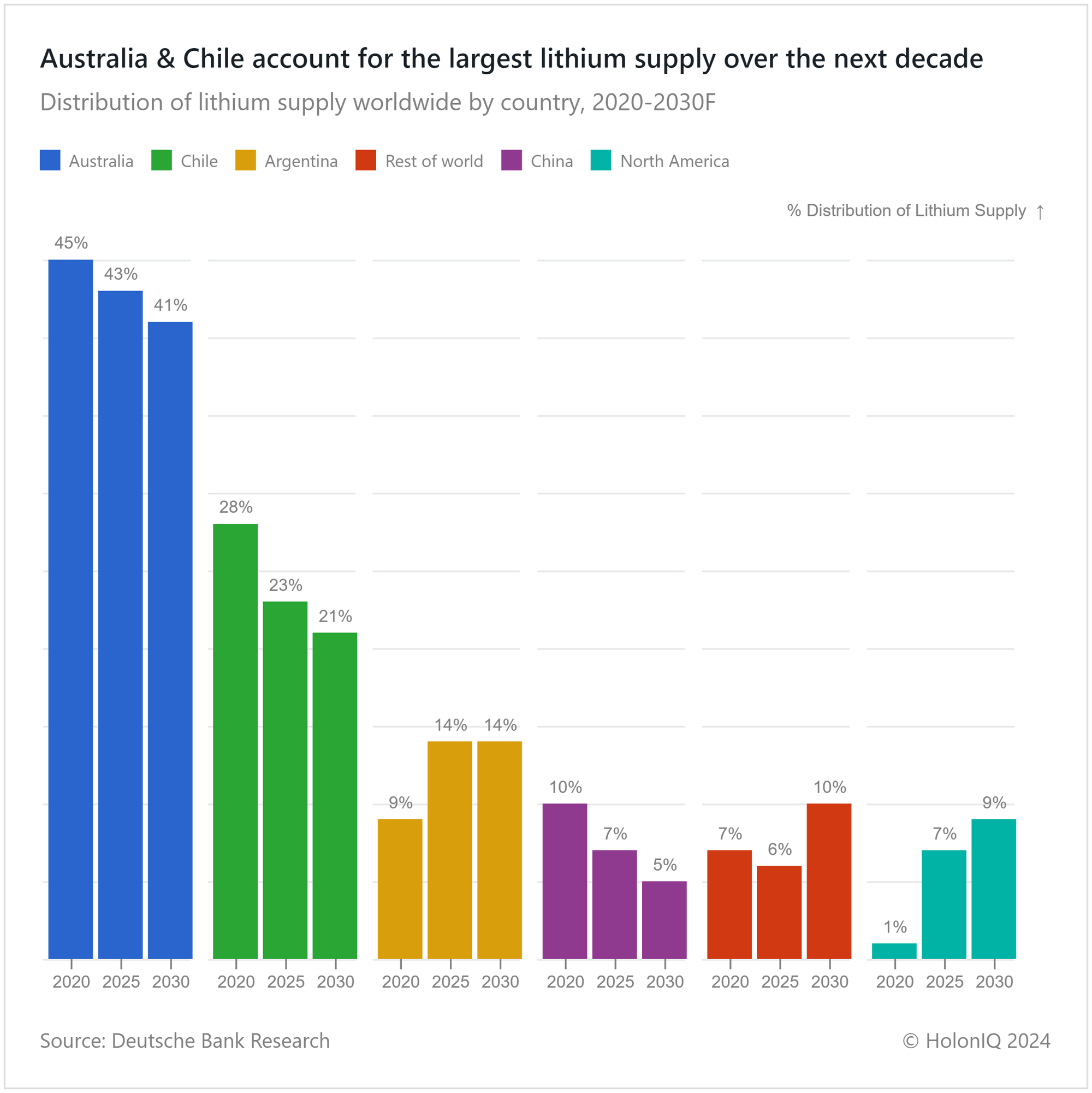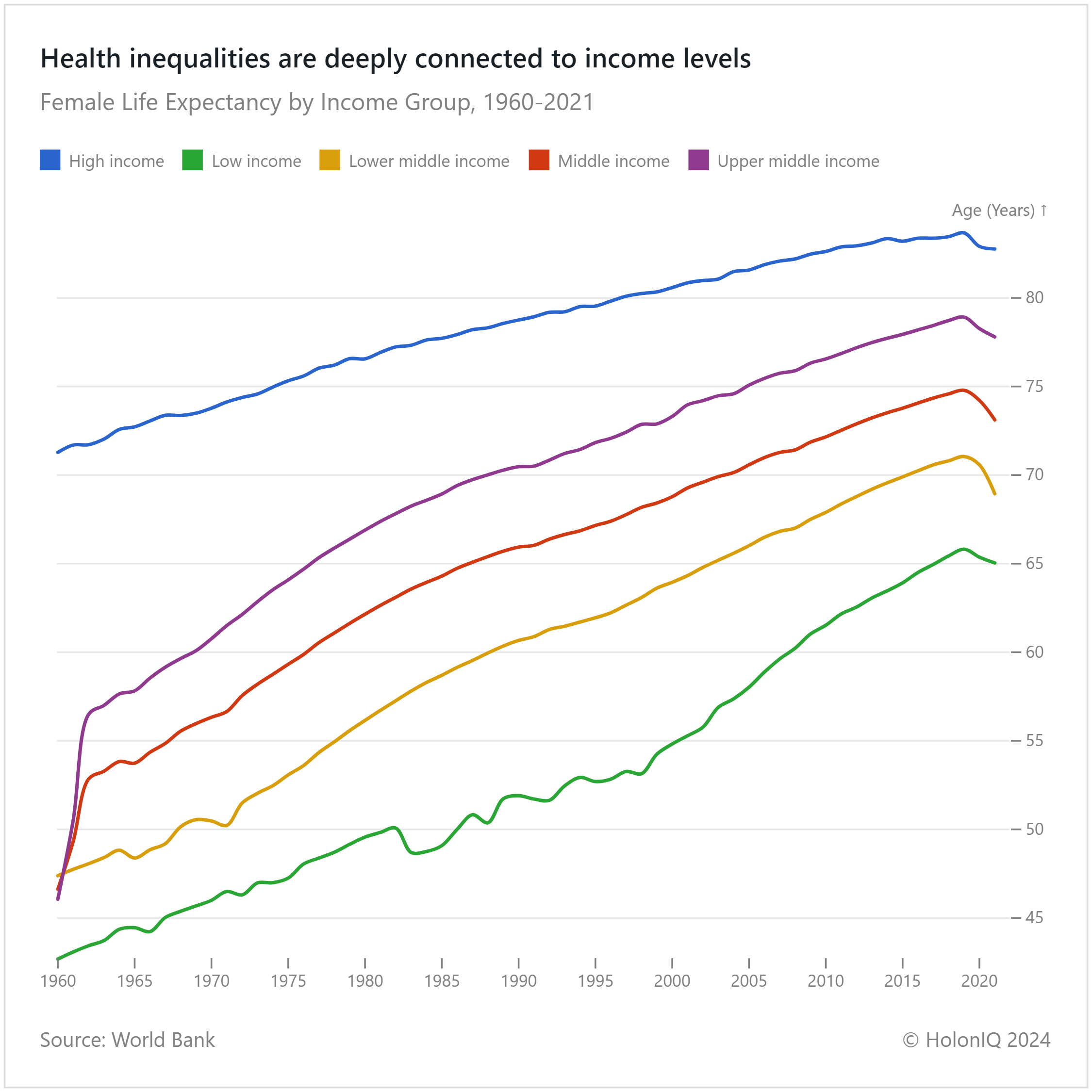🪨 Australia's 40% Lithium Supply. 17Y Life Expectancy Gap. Mental Disorders.
Chart of the Day #21 looks at Lithium Supply Forecasts to 2030, Adolescent Mental Health and Life Expectancy Gaps.
US demand for lithium grows exponentially while secure supply wavers. In Europe, the demand for lithium has become a biodiversity threat to the livelihoods in the mountain regions of Barroso, Portugal (a lithium gold mine). CTR announces a new $1.85B development for the world's first fully integrated lithium and renewable power production facility. Today we look at Global Lithium Supply Forecasts.
Today's Topics
- 🪨 Lithium Supply. Australia to Supply Over 40% of Global Lithium by 2030.
- 😔 Mental Disorders. Rise in Adolescents With Mental Illnesses.
- 👩 Female Life Expectancy. 17-Year Life Expectancy Gap between Low and High-Income Females.
For unlimited access to over one million charts, request a demo.
🪨 Australia to Supply Over 40% of Global Lithium by 2030

The global lithium supply is expected to see a 10% increase by 2030, driven primarily by the rising demand for electric vehicles and batteries. Australia and Chile lead in lithium supply, with Australia's higher output attributed to the mining sector's shift from coal to battery minerals. While China currently contributes only 10% to the global supply and projects a decline, it remains the largest consumer of lithium globally as it leads in processed lithium. Despite China's decreasing output, Argentina is expected to compensate for it, and the declines in Australia and Chile are offset by the increased production in North America and the rest of the world.
😔 Rise in Adolescents With Mental Illnesses

Globally, adolescent boys are seen to be afflicted with mental disorders more than girls. Mental health disorders are more pervasive in higher-income countries due to factors such as higher levels of loneliness, increased electronic device usage and social isolation. Whereas in lower-income countries, familial ties are more prevalent, thus adolescents have better support from a communal aspect. Another reason for lower rates in these regions is due to the lack of healthcare access, where most adolescents are not diagnosed and thus not captured by this statistic.
👩 17-Year Life Expectancy Gap between Low and High-Income Females

Female life expectancy across various income groups has shown improvement over the years, with a distinct correlation between higher income levels and increased life expectancy. The high-income group females' life expectancy has surpassed 80 years in 2021, marking a 17-year gap between females of the low-income group. This positive trend is likely attributable to improved accessibility and affordability of healthcare services; overall healthcare infrastructure and standards of living within the countries they inhabit.
Like getting this newsletter? For unlimited access to over one million charts, request a demo.
Thank you for reading. Have a great week ahead!
Have some feedback or want to sponsor this newsletter? Let us know at hello@holoniq.com
